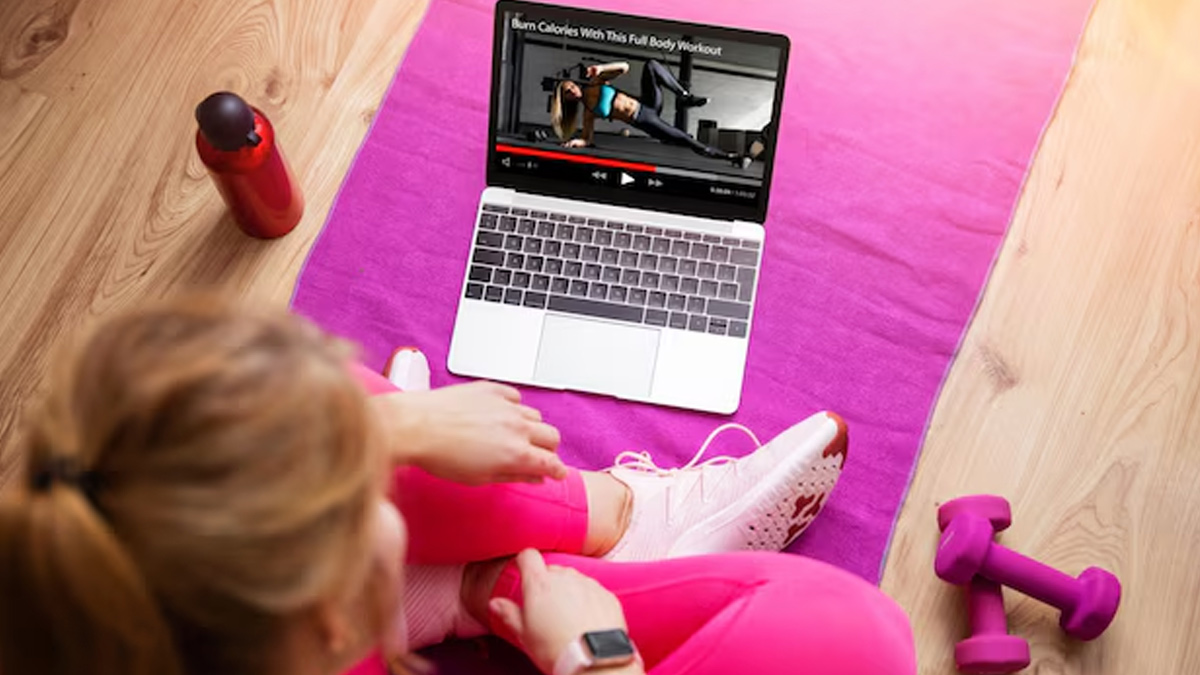Are We Over-Exercising? The Orthopaedic Fallout Of Influencer-Led Fitness Culture
Open any social media app, and the trend is unmistakable: fitness isn’t just a routine; it’s a spectacle: timed planks, balancing squats, one-arm push-ups. The rise of influencer-driven workouts has transformed how people train, compete, and track their progress. But behind the curated posts and challenges, orthopaedic clinics are seeing a steady rise in injuries among young adults, particularly affecting the knees, spine, and shoulders.
The body is built for movement. But when movements are chosen for views rather than form, injury is not far behind. What’s sold as strength training is often missing the structure to support it. We spoke to , who explained if we are over-exercising and how it may be leading to increased injuries.

One of the main reasons people end up injured is incorrect technique. Many trending workouts involve high-impact movements, heavy lifts, jumping drills, or advanced core work that demand control and coordination. If done right, they help build strength. “However, when copied from short online videos without proper instruction, these same exercises can place serious strain on joints and muscles.
Repeated cases of knee strain from weighted squats, shoulder impingement from overhead lifts, and lumbar injuries from deadlifts are no longer rare; they’ve become regular complaints from people in their 20s and 30s,” said Dr Behera.
An emerging concern is the growing number of spinal issues linked to overtraining. Lifting heavy weights without proper alignment, skipping warm-ups, or training while fatigued puts pressure on the spinal discs. Over time, this can lead to herniation, nerve compression, or chronic lower back pain.
Movements that look simple, such as twisting while holding weights or rushing through core sets, can quietly strain the spine. Without proper control and rest, that stress can cause lasting damage.
When people chase fast results, rest often slips through the cracks. But healing happens off the mat, during sleep, after meals, and between sessions. Without that pause, tiny strains build and become harder to reverse.
“Injuries from overuse, such as tendonitis or bursitis, were once mostly seen in athletes. Now, they’re turning up in everyday gym routines. Ongoing pain, swelling, or tightness often go unchecked, especially where pushing through is praised,” added Dr Behera.

One of the more troubling narratives online is the idea that pain is a marker of progress. While some soreness is expected when starting a new routine, sharp or persistent discomfort is not. Accepting pain as part of the process can delay care and worsen the damage.
Timely medical attention, before movement becomes limited or pain becomes chronic, can simplify recovery. Waiting often means more complex treatment, longer downtime, and a higher risk of long-term impact.
According to a study published in Research Gate, common injuries often affect the shoulders, knees, and lower limbs, especially in unsupervised training settings. A survey found that 42% of young individuals in Israeli fitness centres reported experiencing injuries while exercising.
“Exercise isn’t the enemy. But fitness needs to be tailored. What suits one body might strain another. Factors, such as joint health, previous injuries, daily posture, and even sleep patterns, influence how much the body can handle,” advised Dr Behera.
Injuries are less likely to occur when done under expert supervision. A physiotherapist or coach can spot what’s off early. When movements are right and progress is slow, the body holds up better.
Dr Behera concluded, "Health isn’t found in extremes. It’s built over time, with consistency, self-awareness, and recovery. The goal of any fitness routine should be to stay mobile, pain-free, and active, not just to meet a number or chase a trend."
Joint and spine injuries can take weeks to heal. Some may need surgery. Others may leave behind limitations. But with the right precautions, most can be avoided altogether. What happens in a video lasts seconds. What the body carries after injury can last a lifetime.
[ This article contains information provided by an expert and is for informational purposes only. Hence, we advise you to consult your professional if you are dealing with any health issue to avoid complications.]
You may also like...
Diddy's Legal Troubles & Racketeering Trial

Music mogul Sean 'Diddy' Combs was acquitted of sex trafficking and racketeering charges but convicted on transportation...
Thomas Partey Faces Rape & Sexual Assault Charges

Former Arsenal midfielder Thomas Partey has been formally charged with multiple counts of rape and sexual assault by UK ...
Nigeria Universities Changes Admission Policies

JAMB has clarified its admission policies, rectifying a student's status, reiterating the necessity of its Central Admis...
Ghana's Economic Reforms & Gold Sector Initiatives

Ghana is undertaking a comprehensive economic overhaul with President John Dramani Mahama's 24-Hour Economy and Accelera...
WAFCON 2024 African Women's Football Tournament

The 2024 Women's Africa Cup of Nations opened with thrilling matches, seeing Nigeria's Super Falcons secure a dominant 3...
Emergence & Dynamics of Nigeria's ADC Coalition

A new opposition coalition, led by the African Democratic Congress (ADC), is emerging to challenge President Bola Ahmed ...
Demise of Olubadan of Ibadanland
Oba Owolabi Olakulehin, the 43rd Olubadan of Ibadanland, has died at 90, concluding a life of distinguished service in t...
Death of Nigerian Goalkeeping Legend Peter Rufai

Nigerian football mourns the death of legendary Super Eagles goalkeeper Peter Rufai, who passed away at 61. Known as 'Do...





